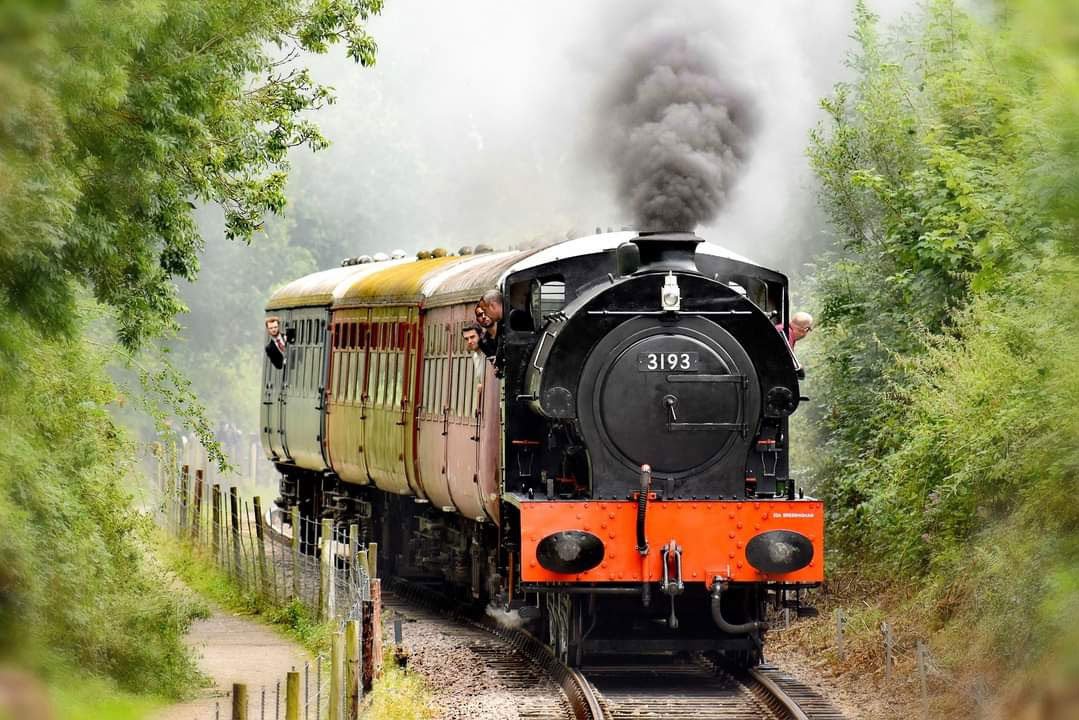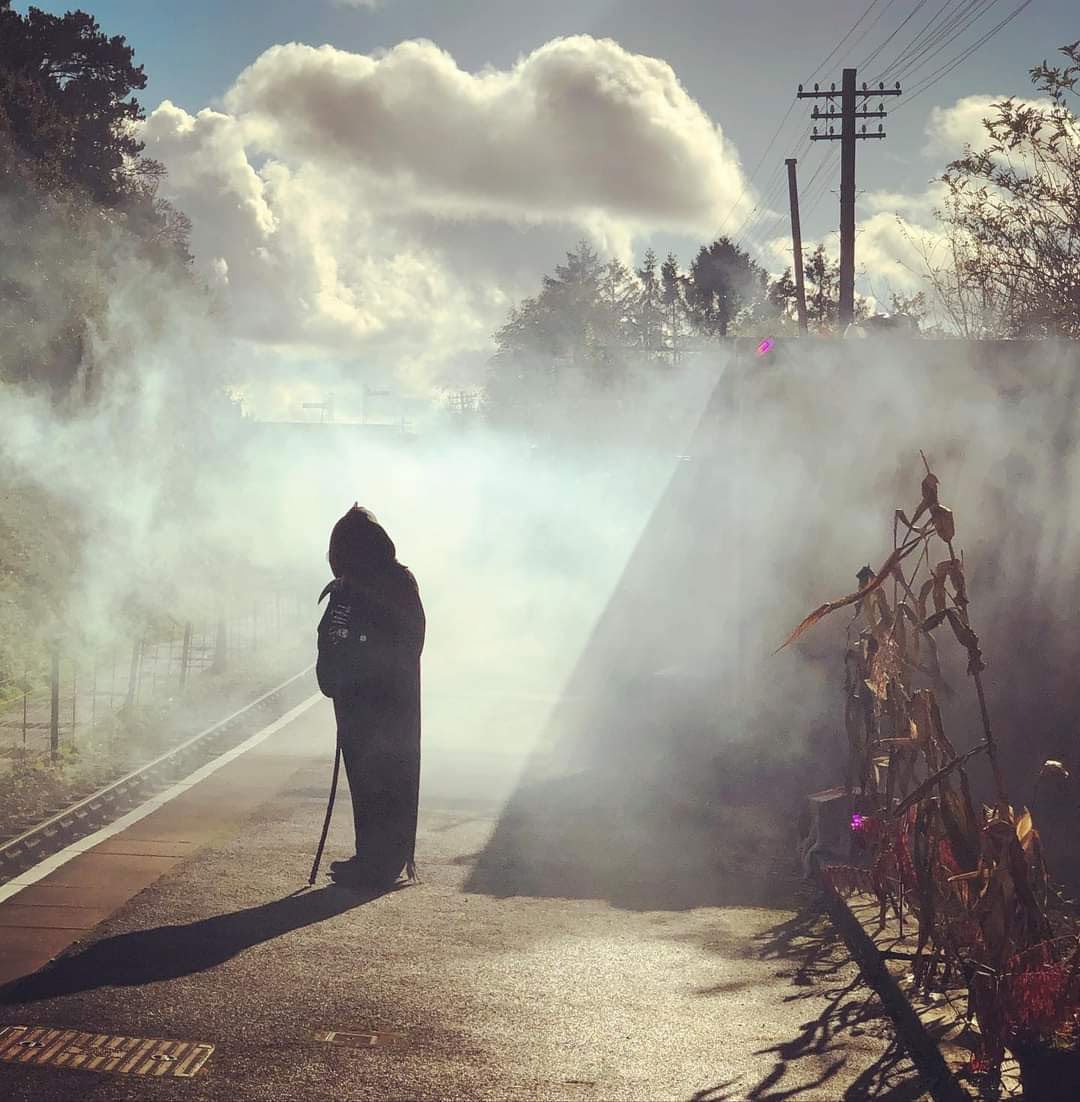Travelling back in time on the Northampton and Lamport Railway
by Laura Malpas
My favourite heritage sites are those run by true enthusiasts who live and breathe their passion, and who want to share it with the public. This month I hit the motherlode at the Northampton and Lamport Railway. As I arrived at the station my nose caught a scent so reminiscent of my childhood daily train journey to school that my heart almost skipped a beat. I had only been there for a few minutes when I realised that I was grinning and looking around I could see that same grin reflected on the faces of visitors and volunteers alike.
It’s official, I think that I have become a Railway Enthusiast!
I am not alone; the country is filled with a network of railway lovers. There are more than 150 heritage railways in Britain, with 560 miles of track visiting 460 stations. There are so many ways to experience the joy of the tracks, and the engines that pass along them. For some visitors it is a first-time experience, for others it is a nostalgic revisiting of their past. And it’s so fun!
The railway network throughout Northamptonshire began in the 1830s and was quickly recognised as a key requirement for economic success in the new world of the Victorian Industrial Revolution. The population’s desire for speedy and safe travel plus the discovery of large deposits of iron ore in the county stimulated the desire for railways. By the middle of the 19th century, the London and North Western Railway network was becoming well established in the county with branch lines regularly being added. George R Stephenson, nephew of the great engineer George Stephenson, designed and built a new railway linking Northampton and Market Harborough, opening in 1959. Originally it was a single track, but as soon as the benefits became clear, another line was added, offering an ‘up’ and a ‘down’ line. There were six stations between Northampton and Market Harborough, at Pitsford & Brampton, Spratton, Brixworth, Lamport, and Clipstone. The undulating countryside required the construction of two tunnels at Kelmarsh and Oxenden, both double bored.
Sadly, many things conspired against the long-term success of this railway. Alternative cheaper sources of iron ore became available, and the development of the road network for both passengers and freight meant that a great many branch lines connecting predominantly rural areas fell into disuse. The future for the line was in doubt even before Richard Beeching wrote his reports on the future of railways in Britain in the mid 1960s. The days of the line were already numbered, first closing to passengers in January 1960 with the loss of the stations between Northampton and Market Harborough. Attempts were made to revive the service, with through traffic being reintroduced for a few months in 1969 and for a year in 1972. But by August 1973 the line was finally closed to passengers. The last ever British Rail train to run the track made its journey on 15th August 1981, watched by many with nostalgia and regret. The line closed to all traffic the next day, 123 years after it opened.
But the romance of the railway is with us still. Northamptonshire County Council purchased the old ‘up’ track way to create a 14-mile long ‘linear park’ including the Kelmarsh and Oxenden tunnels. This route has been made safe and offers an enjoyable walking and cycling route for the public, punctuated by at least three pubs along the way.
After the closures, a group of enthusiasts formed, who eventually became the ‘Northampton and Lamport Railway’ (NLR) in order to preserve, rebuild and reopen what they could, based in the old goods yard at Pitsford & Brampton station. And what they have managed to achieve as volunteers is truly remarkable.
In their initial project, a massive effort succeeded in restoring the Pitsford & Brampton station, two signal boxes, three quarters of a mile of running line and some sidings. The first passengers were carried along the newly restored section some fourteen years after the final closure, on 19th November 1995. Four months later the line was officially opened.
“I found that the most interesting element of the visit was seeing what goes on in the Signal Box. This is the ‘nerve centre’ of the railway, and from here the safety of the line is managed. On the day I visited, a new volunteer signalman was enjoying learning the levers using a restored signalling system dating back to the 1880s.”
And seven years later in 2002 the working volunteer members managed to extend the line to the next bridge along requiring a great deal of hard work, and fundraising realising an initial sum of £50,000 with help from the National Lottery.
The current big push is to complete the southern line extension to reach the Boughton Crossing. The volunteers have been working hard even through the pandemic to restore an eight-arch viaduct and build a new station at Boughton. Track is laid, and the platform nearly ready. It will be very exciting when it opens!
And of course, I haven’t yet mentioned the engines that power along the tracks, pulling passengers of all ages, perhaps the topic for another day. Steam and diesel engines both have their charms, including their unique sounds and smells transporting us back into the past, or perhaps even back to the much-loved books of our childhood memories.
Most visitors to the NLR are either railway enthusiasts, families introducing children to the fun of the railway, or older folks enjoying the nostalgia of their past. A trip on the railway is the perfect multi-generational day out. And the grin I felt appearing on my arrival at the station seems to be the most usual response. Chatting with the young volunteer ticket inspectors, they said that almost everyone leaves the train carriages at the end of their journey with smiles on their faces.
More smiles are to be found in the fabulous little café housed in an old carriage. The team that produces the yummy all day breakfast baps, fresh rolls and burgers, cakes, snacks and beverages all volunteer for the pleasure of helping people to have a fun day out. Visitors can either enjoy their food at the platform picnic tables, or even in a private compartment in the First-Class carriage pulled up nearby.
Image credit; Joey Evans
There’s a shop filled with memorabilia, currently also acting as the ticket office. The platform is decorated with tubs of flowers, and piles of vintage luggage recreating the magic of the past. The Station Master is on hand to ensure all goes well, and ticket inspectors make sure you know where to go. It’s such a pleasant reminder of how things used to be, staff in smart uniform going out of their way to be helpful.
I found that the most interesting element of the visit was seeing what goes on in the Signal Box. This is the ‘nerve centre’ of the railway, and from here the safety of the line is managed. On the day I visited, a new volunteer signalman was enjoying learning the levers using a restored signalling system dating back to the 1880s. Signalling requires clear logical thinking, a rigorous routine, and a fair bit of physical effort to ensure that the signals up and down the line are showing the correct message. Visitors are welcome to watch the process as long as they don’t get in the way!
An additional safety element requires the use of a staff or block token to be physically exchanged between the train driver and the signalman to ensure that only one train is on each section of track, and this is why the train slows down as it passes through the station. I was lucky enough to ride in the cab along with the driver who shared many stories along with the 2nd man and the guard. They all clearly love what they do.
The NLR operate on Sundays and on Bank Holidays, with seasonal ‘specials’. There’s plenty of parking, and a bike rack for cyclists to join the train ride too. Well behaved dogs are welcome, and the accessible carriage suitable for wheelchairs is about to be available again. You will be hauled by either a steam or vintage diesel locomotive offering an ‘out and back’ ride of around 30 minutes. I loved my trip and enjoyed sitting at the station watching the train come and go and chatting with other like-minded folks enjoying the sunny afternoon out.
This is a truly friendly and inspiring society. They all have boundless enthusiasm for their railway and great ambitions for future projects. New volunteers of all ages are welcome, as it takes around 15 volunteers to run a Sunday service, and full training is given. There were trainee ticket inspectors, signallers and a guard working on my visit. There is also ongoing track restoration for which additional volunteers are always appreciated.
This is one of the happiest days out that Northamptonshire has to offer, and as a summer Sunday treat it’s hard to beat.
For more information, visit their website.



